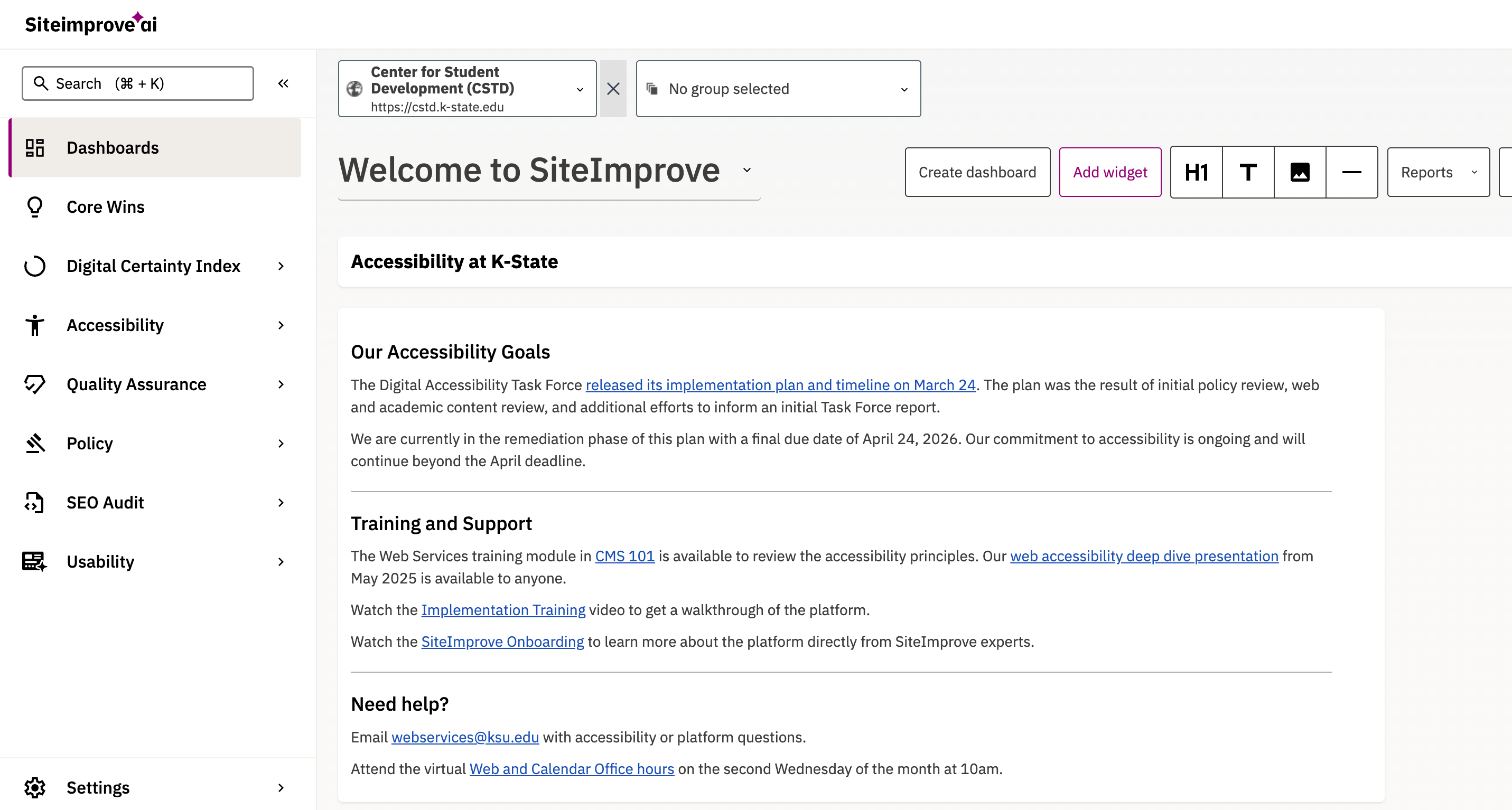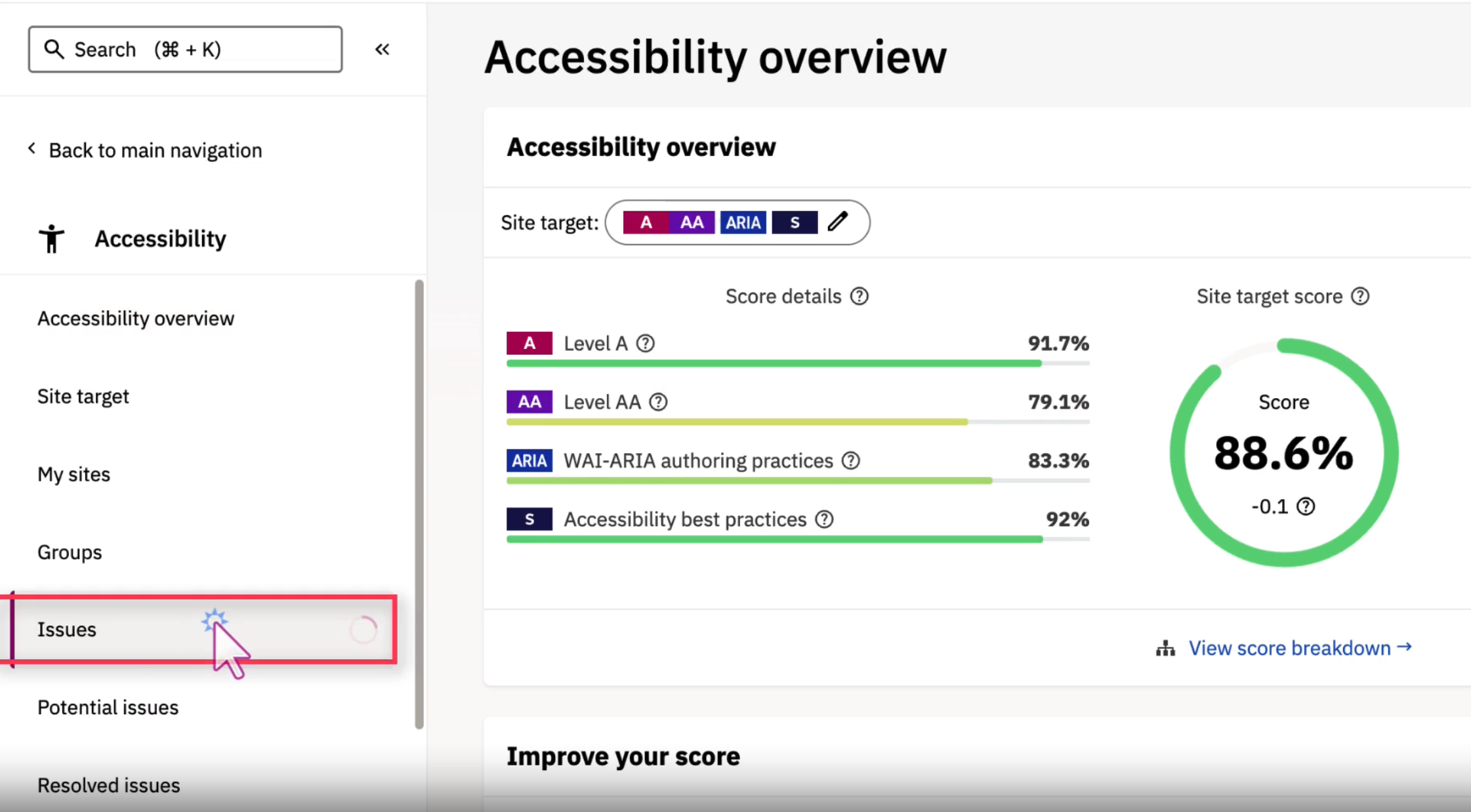Siteimprove Accessibility Module User Guide
Siteimprove, a platform available to K-State website owners, offers a suite of tools that help us advance K-State's web presence. Chief among these tools are Siteimprove's accessibility module, offering targeted, actionable insights into how users can improve K-State websites.
Getting Started
When you log in to Siteimprove, you'll log in to your Dashboard. The Division of Communications and Marketing (DCM) has created a "Welcome to Siteimprove" dashboard view that gives you a quick overview of the digital accessibility initiative, with some quick links to resources and support.

Step 1: Navigate to the Accessibility Module
From the dashboard, navigate to the accessibility module by selecting "Accessibility" in the left-hand menu of the Siteimprove screen. The overview screen that then displays will show your overall site score, as well as the compliance standards that score is based upon.
- For the duration of the fall 2025 semester, DCM has set system-level site targets, or accessibility goals, to only include base-level compliance standards: WCAG 2.1 Level A and AA, plus accessibility best practices.
- Your goal is to reach a minimum of 90% compliance among these standards by the end of calendar year 2025.
- If you're already near or above 90%, don't stop there! Reach out to webservices@k-state.edu for advisement on where to focus your time during fall 2025.
- In early 2026, DCM will review progress and communicate the institutional goal for spring 2026 efforts.

Step 2: Navigate to the Issues Tab
In the left-hand menu under Accessibility, there is a tab labeled "Issues". This is where you'll spend the bulk of your time identifying issues for remediation and ensuring progress toward compliance.

Prioritizing Your Efforts
Within the issues tab and above the list of identified issues, you'll find a "filters" option, offering several ways you can prioritize the identified issues. We recommend:
- First, filter by responsibility. Focus on issues with responsibility of "content writing, UX design, or visual design" first.
- Why? Because issues under the responsibility of "developer" may larger be being handled by DCM, though there are some exceptions.
- Second, you can choose to filter by element type, allowing you to tackle one type of challenge at a time, or by difficulty, allowing you to prioritize easy fixes first to improve your score.
- Why filter by these? Give yourself smaller goals to achieve as you work toward the bigger picture. This will help you feel organized and more accomplished.
Step 3: Resolving Issues
Once your filters are set, you can navigate down to your prioritized set of issues. Click on an individual issue to find all occurrences, as well as guidance on how to fix the given issue. You will then need to navigate to the page(s) within the CMS to fix the issue itself.

Step 4: Don't Forget About Easy Wins
As you review where issues reside within your site, remember that some of the easiest wins in improving your accessibility score could be deleting old/unused pages and/or documents (including PDFs). If you know that your site contains old and outdated content like this, make a plan to remove it and clean up your site — and save yourself some time!
Questions?
There are several resources available to help you on your accessibility advancement journey.